
views
- To untangle a wig, finger comb large knots and use a wide tooth comb to gently remove tangles.
- Apply a pre-made wig detangling spray or create your own with 3 parts water and 1 part wig-safe conditioner.
- Separate the hair into smaller sections and work from the ends up to the roots to make detangling easier.
How to Untangle a Synthetic Wig
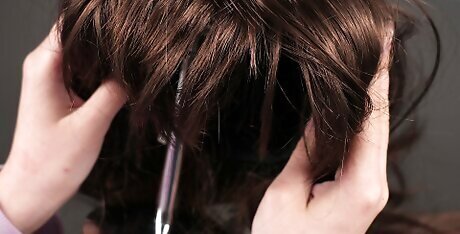
Place the wig on a wig stand. Using a wig stand or styling head gives you a stable area to work on, which makes the detangling process much easier. If your wig is particularly long, try setting the wig head on a camera tripod or another tall object to give you more room to work.
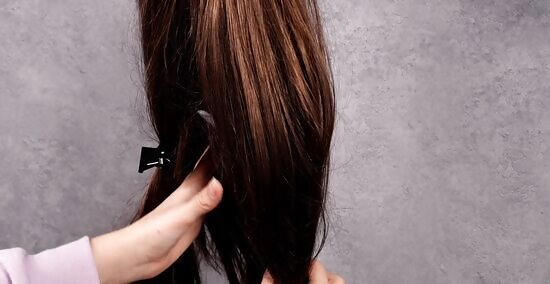
Divide the hair into sections. Use hair clips to hold the sections in place. Separating the wig helps you focus on knotted areas without creating more tangles in the process. The number of sections you need depends on the length and thickness of the wig.
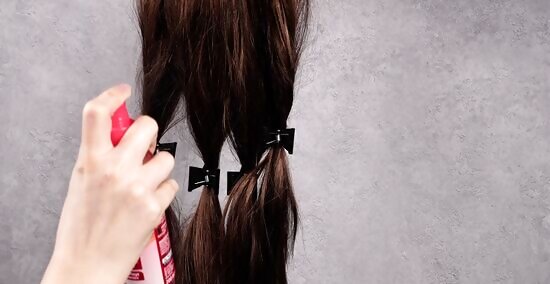
Spray the wig with a synthetic wig detangler. Make sure your detangler is specifically designed for synthetic wigs and apply it generously to each section. Pay special attention to any areas that are extremely knotted. If you don’t have a wig detangler, make one by filling a spray bottle with 3 parts water and 1 part wig-safe conditioner. You can also swap the conditioner for fabric softener, but only for synthetic wigs.
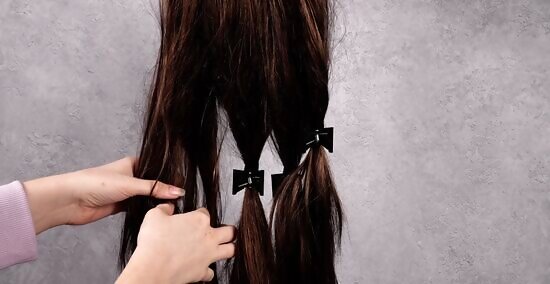
Finger comb larger knots. Loosening large knots with your fingers helps remove the most obvious tangles without adding stress to the wig’s synthetic fibers.

Detangle with a wide-toothed comb. Using a comb designed for synthetic wigs, start combing your wig from the bottom and work your way to the roots. Hold the hair firmly with one hand (just above where you are combing) as you comb with the other hand. If the hair is quite tangled, you may need to do this in small sections. Depending on the length of your wig, this process can take a long time (up to an hour). Be careful not to yank on the wig, as this only makes tangles worse. Instead, carefully comb out each tangle.
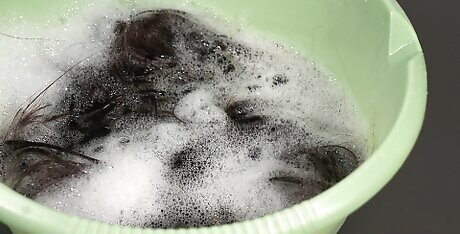
Shampoo and condition your wig. Fill a sink or basin with cool water and a capful of synthetic wig shampoo. Submerge the wig and let it sit for a few minutes, then swirl it around to remove the shampoo. Remove the wig and refill the sink with clean, cool water, then swirl the wig again until all the shampoo is gone. Repeat the process with the conditioner. When washing a synthetic wig, be sure not to scrub the wig, as that will create more tangles. In general, soak your wig in conditioner for about 10 minutes to keep the synthetic hair soft. If your wig is particularly damaged, soak for at least 30 minutes to an hour and up to a full night.
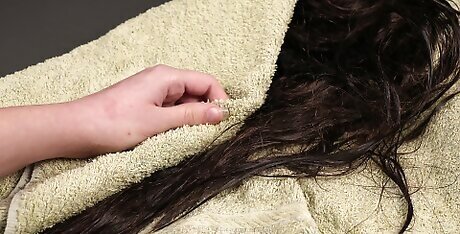
Dry your wig with a towel. Gently blot your wig with a clean, dry towel. Don’t wring or twist the wig, as this could lead to more tangles.
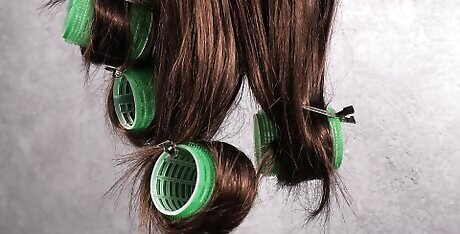
Style your wig. Use brush rollers or your fingers to style the wig however you like. Sometimes, you can shake synthetic wigs to style them, as well. Avoid using products like hairspray and heat protectants when styling a synthetic wig. These products can make the wig deteriorate faster. Use a steamer to style synthetic wigs. This way, you can curl or straighten the hair without burning or melting the fibers.
How to Untangle a Human Hair Wig

Place your wig on a styling head. If possible, mount the wig head onto a camera tripod (or another tall object) to make it easy for you to work on it. This is especially helpful if the wig you are combing is very long. If you don’t have a wig head (or a tripod) simply lay your wig on a table or counter.
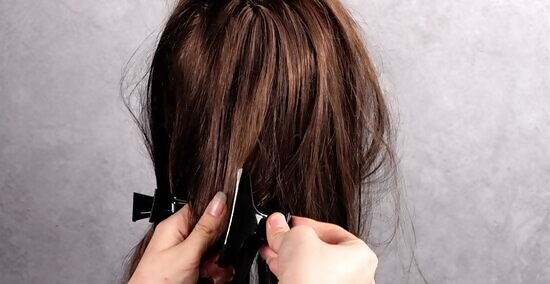
Clip the hair into manageable sections. This helps relieve tension while brushing and makes it easier to focus on particularly tangled areas. The number of sections you use depends on the length and density of the wig.
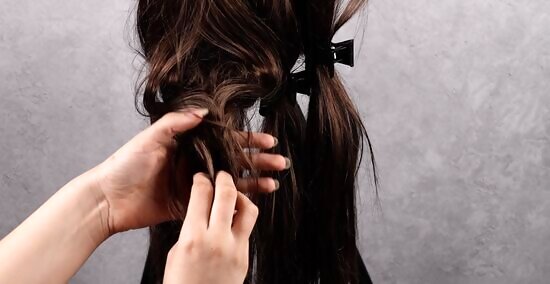
Comb larger knots with your fingers. If your wig has large, noticeable tangles, gently separate them using your fingers.
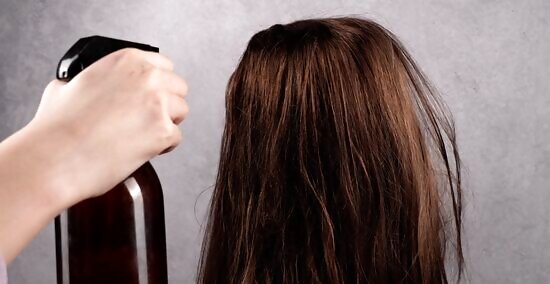
Spray with a water and conditioner mixture. Fill a spray bottle with 3 parts water, 1 part wig-safe conditioner. Shake well, then apply liberally until the wig is saturated. You may also choose to use a leave-in conditioner, or a product designed specifically for untangling wigs. These products do not need to be diluted in water. If the conditioner begins to separate from the water, give the bottle another shake.
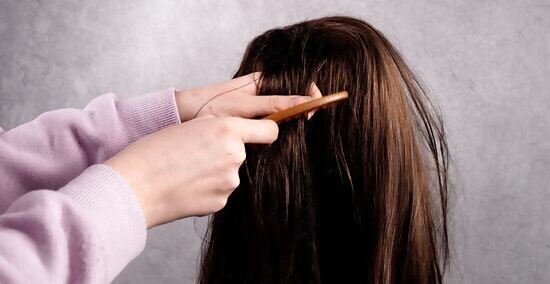
Comb your wig with a wide-toothed comb. Starting from the tips, gently comb your wig and work your way up to the roots. Firmly hold the hair in one hand (just above where you’re combing) and comb with the other. You may need to work in small sections if the wig is particularly tangled. Apply more of the conditioner mixture as needed. Depending on how long or tangled your wig is, this process can take up to an hour. Avoid tugging and yanking on the wig, as this makes the tangles worse. Instead, gently comb out each tangle. If your wig has bangs, untangle them with a fine-tooth comb.
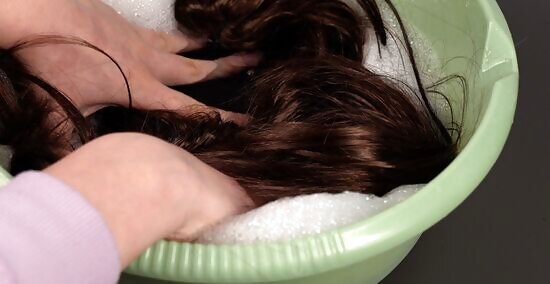
Shampoo and condition your wig. Fill a sink or basin with lukewarm water and squeeze in a bit of human hair wig shampoo. Soak and swirl your wig in the water, rubbing the shampoo in with your fingers. Rinse with cool water, with the water running in the same direction as the hair to avoid tangles. Repeat the same process with a wig-safe conditioner. When conditioning, don’t apply product too close to the base, as this could weaken the knots holding the wig together. When washing a human hair wig, try turning the wig inside out so the shampoo can reach the wig cap, which is where most of the dirt, oils, and sweat collect.
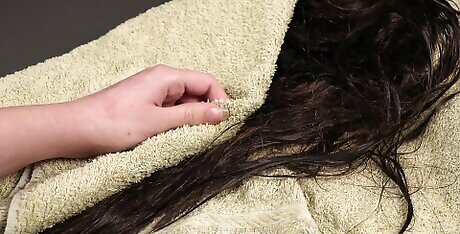
Dry your wig with a soft towel. Absorb the water by blotting the hair with a towel or soft T-shirt. Avoid rubbing or wringing the wig, as this could create more tangles. Once the wig is no longer dripping wet, let it air dry on your wig stand or use a hairdryer on a low setting. Be careful if you use a hairdryer, as it’s very easy to damage the wig this way. For the best results, allow it to air dry out of direct sunlight. As your wig air dries, gently comb through it every 30 minutes. In 2-3 hours, your wig should be completely dry.
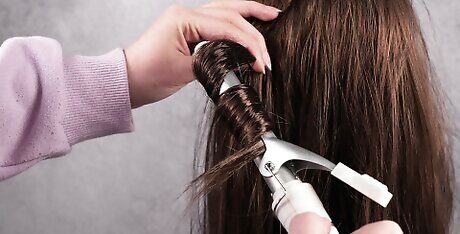
Style your wig. After your wig is dry, style it however you prefer using your fingers or a curling iron set on low. Unlike synthetic wigs, you can use a bit of heat on human hair wigs. Just be careful not to overdo it and use a heat protectant. To restore a frizzy human hair wig, try flat ironing it to smooth it out until you have time to do a longer, more thorough treatment.
How to Prevent Wigs from Tangling
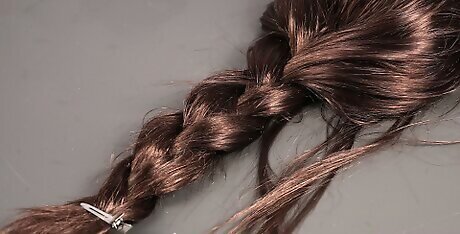
Don’t sleep in your wig. If you sleep in your wig, it will rub against your pillows and blankets, creating tangles. Avoid this by taking your wig off before bed. If you choose to sleep in your wig, use a satin or silk pillowcase to reduce friction.
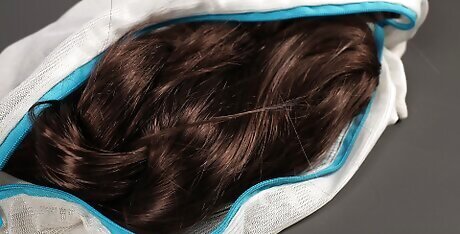
Store your wig properly. If possible, put your wig back in its original packaging when you’re not wearing it, or keep it on a wig stand. This prevents your wig from rubbing against things and creating tangles. If you don’t have your wig’s original packaging, try storing it in a netted wig cap.
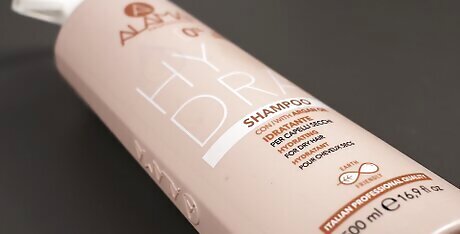
Use gentle products for your wig. Opt for natural products without harsh chemicals like sulfates, which can dry your wig out and cause it to tangle more easily. Use a moisturizing conditioner to hydrate your wig. Unlike natural hair, which is moisturized by the sebum produced by your scalp, wigs don’t self-moisturize, which leads to them drying out and tangling easily.
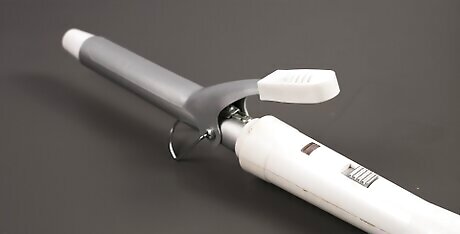
Avoid excessive heat styling. Heat harms the fibers of synthetic wigs and causes human hair wigs to tangle more easily. Be cautious and use heat protectant sprays when styling.
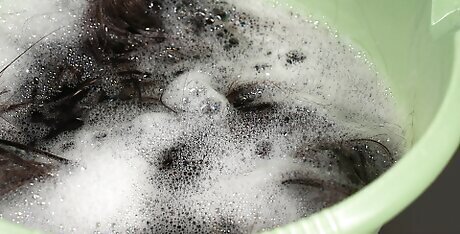
Wash your wig after about 21 uses. While washing your wig is important for maintenance, washing it too frequently can dry it out and cause tangles. In general, wash your wig after you wear it 21 times. If you don’t wear your wig daily, you can go longer than a month between washes.
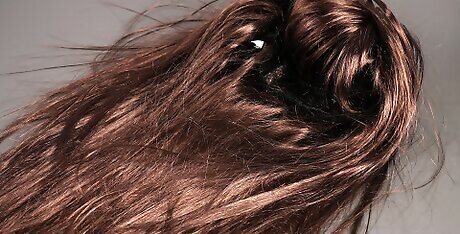
Buy a high-quality human hair wig. Human hair wigs are more expensive than synthetic wigs, but they’re less prone to tangling and last longer. If you can, opt for a wig with the cuticles facing the same direction. If the hair cuticles don’t face the same direction, they’ll snag when strands touch each other. The texture of your wig matters, too. The curlier your wig is, the more likely it is to tangle. Go with a straight wig for easier maintenance.


















Comments
0 comment